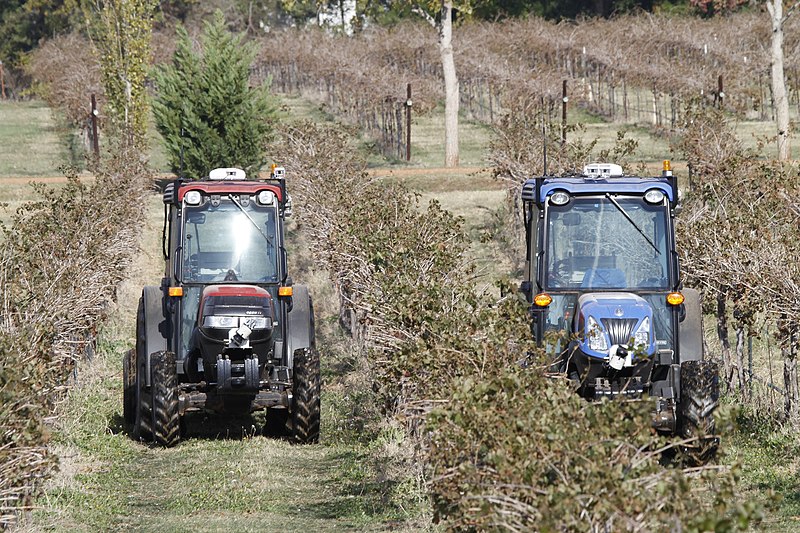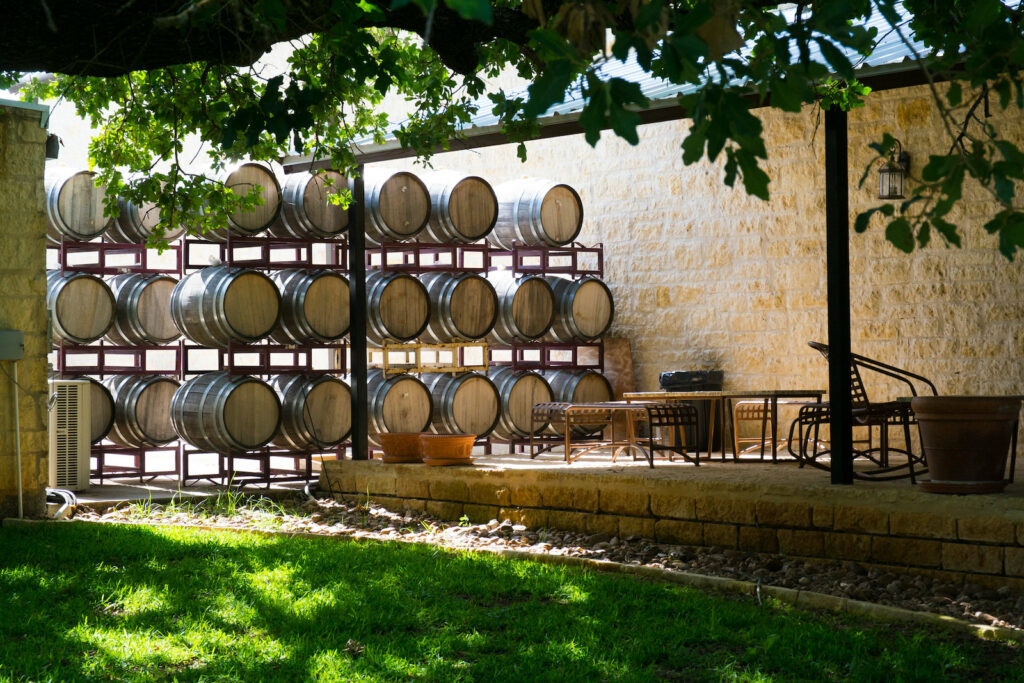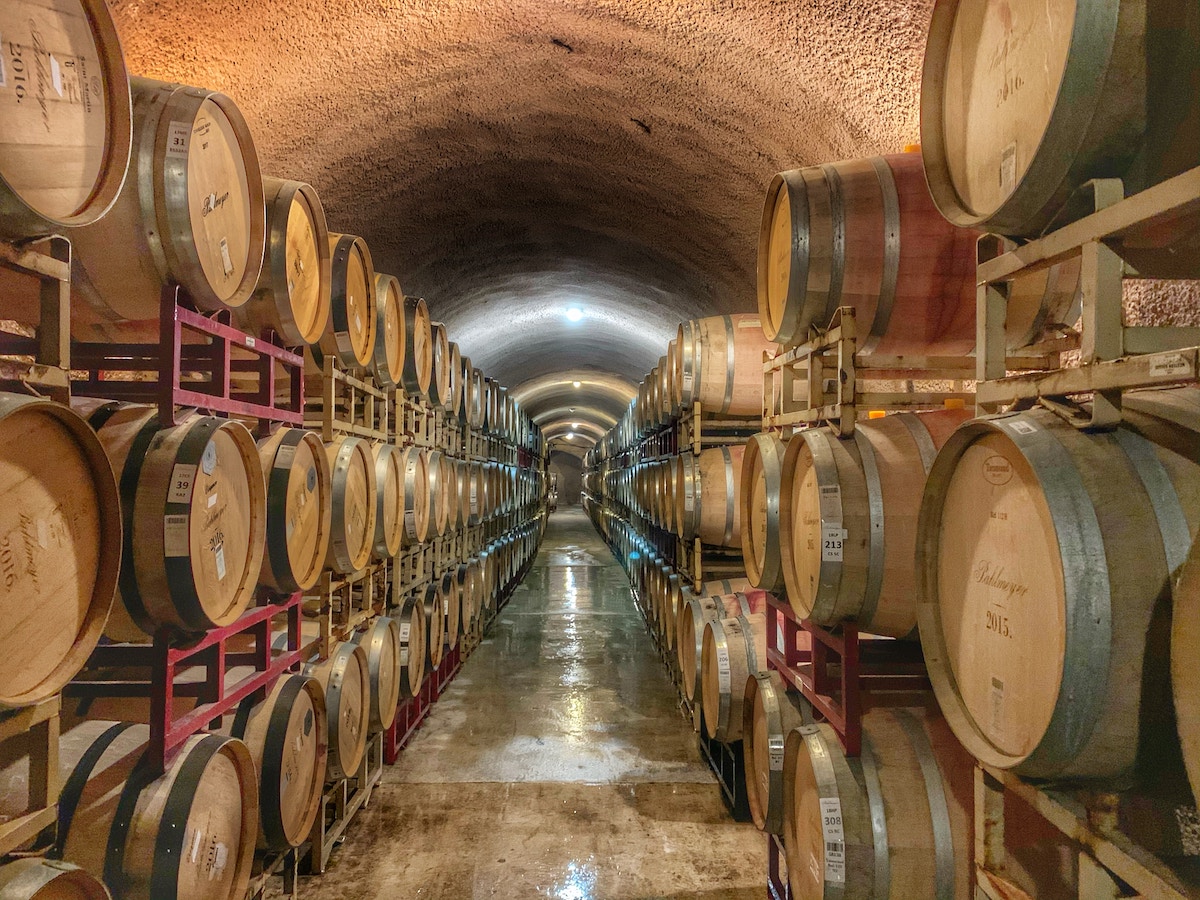
From Spanish Missionaries to Modern Vineyards
Texas has a rich history of winemaking that dates back to the 1650s when Spanish missionaries produced some of the earliest recorded Texas wines near El Paso. Since then, the state has become a major player in the American wine industry, with a wine culture that rivals those of more well-known wine regions like California and Oregon.
Despite its reputation as a dry and arid state, Texas has a climate that is ideal for growing grapes. The state’s major winemaking regions have drawn comparisons to some of the best wine regions in Europe, including Spain, France, and Italy. In fact, Texas is the fifth-largest wine-producing state in the US, with over 400 wineries and 9,000 acres of vineyards spread across the state. The state’s wine industry has come a long way since its early days, and today, Texas wines are known for their quality and unique character.
Early History of Winemaking in Texas
Winemaking in Texas has a long and interesting history that dates back to the early 1600s. The state’s warm climate, fertile soil, and diverse grape varietals have made it an ideal location for wine production. In this section, we will explore the early history of winemaking in Texas, including the influence of Spanish missionaries and early settlers, as well as the impact of the Phylloxera crisis and the work of Thomas Volney Munson.
Spanish Missionaries and Early Settlers
Some of the earliest recorded Texas wines were produced by Spanish missionaries in the 1650s near El Paso [1]. These early winemakers planted grapevines brought over from Spain and used them to produce sacramental wines for use in religious ceremonies. As the Spanish colonized Texas, they continued to cultivate grapes and produce wine, with some vineyards being established as far east as modern-day Houston.
In the mid-1800s, German and French settlers began to arrive in Texas and brought with them their own winemaking traditions. These settlers established vineyards in the Hill Country and other regions of the state, and their influence can still be seen in the varietals grown and produced in Texas today.
Thomas Volney Munson and the Phylloxera Crisis
In the late 1800s, Texas winemakers faced a crisis when the Phylloxera pest devastated grapevines across Europe and North America. Thomas Volney Munson, a horticulturist from Denison, Texas, played a crucial role in helping to save the industry. Munson studied the rootstock of grapevines and identified native American grape varieties that were resistant to Phylloxera [4].
Munson’s work earned him recognition from the French Legion of Honor in 1888, and he went on to become a leading authority on grape cultivation and winemaking in the United States [3]. Today, many of the grapevines used in Texas winemaking are grafted onto the rootstock identified by Munson, allowing the industry to thrive despite the challenges posed by pests and disease.
In conclusion, the early history of winemaking in Texas is a fascinating story of ingenuity, perseverance, and adaptation. From the influence of Spanish missionaries and early settlers to the work of Thomas Volney Munson and the Phylloxera crisis, the industry has faced many challenges and emerged stronger as a result. Today, Texas is home to a thriving wine industry that produces a wide variety of high-quality wines enjoyed by people around the world.
[1] Source: https://en.wikipedia.org/wiki/Texas_wine
[3] Source: https://texaswine.com/the-brief-but-interesting-history-of-wine-making-in-texas/
[4] Source: https://www.tshaonline.org/handbook/entries/munson-thomas-volney
Prohibition and Its Impact
Prohibition, which lasted from 1920 to 1933, was a significant event in the history of winemaking in Texas. The 18th Amendment to the U.S. Constitution prohibited the production, transportation, and sale of alcohol, including wine. This had a significant impact on the wine industry in Texas, which was just beginning to gain traction in the early 20th century.
Before Prohibition, Texas had more than 70 commercial wineries operating in the state. However, the ban on alcohol caused many of these wineries to close down. Only one Texas winery, Val Verde Winery, survived during those dry years, providing an immense opportunity for grape growers and winemakers.
Prohibition was a major blow to the American wine industry as a whole, and Texas was no exception. Grape growing and winemaking were successful commercial enterprises in several states, but the ban on alcohol caused many of these businesses to close down. According to the Smithsonian National Museum of American History, grape growers in California and other states were forced to sell their crops for juice, jelly, and raisins instead of wine.
Despite the negative impact of Prohibition, it did have some positive effects on the wine industry in Texas. During the dry years, grape growers and winemakers were able to experiment with new grape varieties and production techniques. This led to the development of new and improved wines that helped the industry to bounce back after Prohibition was repealed.
In conclusion, Prohibition had a significant impact on the history of winemaking in Texas. While it caused many wineries to close down, it also gave grape growers and winemakers the opportunity to experiment and innovate. Today, Texas is home to more than 400 wineries and is one of the fastest-growing wine regions in the United States.
Post-Prohibition Revival
After the repeal of Prohibition in 1933, the Texas wine industry was slow to recover. It wasn’t until the 1970s that the industry started to gain momentum again. This period marked the beginning of the post-prohibition revival of the Texas wine industry.
Experimental Vineyard and the Rise of Modern Wineries
One of the key players in the post-prohibition revival was the establishment of the Experimental Vineyard in Lubbock by Texas Tech University in 1976. The vineyard served as a research facility for grape growing and winemaking in Texas. It was instrumental in developing new grape varieties that could thrive in the harsh Texas climate.
The success of the Experimental Vineyard led to the establishment of modern wineries in Texas. Llano Estacado Winery, founded in 1976, was the first modern winery in Texas. It was followed by Fall Creek Winery in 1975, Becker Vineyards in 1992, and many others.
Key Figures in the Revival
Several key figures played a significant role in the post-prohibition revival of the Texas wine industry. Bob Reed, a former professor at Texas Tech University, was instrumental in the establishment of the Experimental Vineyard. Ed Ahlert, a grape grower and winemaker, was one of the pioneers of the modern Texas wine industry. Richard Becker, founder of Becker Vineyards, was another key figure in the industry.
Bonded wineries were also important in the post-prohibition revival. Bonded wineries are licensed by the federal government to produce wine. They played a crucial role in the early days of the Texas wine industry by providing a legal way to produce and sell wine.
Overall, the post-prohibition revival of the Texas wine industry was a slow but steady process. It took several decades for the industry to gain momentum, but today it is a thriving industry that produces award-winning wines.

Texas Wine Regions
Texas is home to several wine regions, each with its unique climate, soil, and grape varieties. Here are some of the major wine regions in Texas:
Texas Hill Country
The Texas Hill Country is the largest wine region in Texas, covering an area of over 9 million acres. It is home to several wineries and vineyards, producing a variety of wines, including Cabernet Sauvignon, Chardonnay, and Tempranillo. The region is known for its hilly terrain, limestone soil, and hot and dry climate.
Texas High Plains
The Texas High Plains is the second-largest wine region in Texas, covering an area of over 8 million acres. It is located in the northern part of the state and is known for its high elevation, cool nights, and hot days. The region is home to several grape varieties, including Cabernet Sauvignon, Merlot, and Chardonnay.
Texoma and Escondido Valley
Texoma and Escondido Valley are two wine regions located in the northern part of Texas. Texoma is known for its sandy soil and hot and dry climate, while Escondido Valley is known for its fertile soil and cool nights. Both regions produce a variety of wines, including Tempranillo, Cabernet Sauvignon, and Chardonnay.
Texas Davis Mountains AVA
The Texas Davis Mountains AVA is a wine region located in the western part of Texas. It is known for its high elevation, cool nights, and hot days. The region is home to several grape varieties, including Cabernet Sauvignon, Merlot, and Chardonnay.
Gulf Coast and East Texas
The Gulf Coast and East Texas are two wine regions located in the southeastern part of Texas. The regions are known for their humid climate and fertile soil. They produce a variety of wines, including Blanc du Bois, Black Spanish, and Lenoir.
Overall, Texas is home to several wine regions, each with its unique climate, soil, and grape varieties. These regions produce a variety of wines, from Cabernet Sauvignon to Chardonnay to Tempranillo. Whether you’re a wine enthusiast or a casual drinker, Texas has something for everyone.
Grape Varieties in Texas
Texas has a rich history of winemaking dating back to the 1650s. With a diverse range of climatic conditions, the state has become home to a variety of grape varieties. Here’s a breakdown of the grape varieties grown in Texas:
Vitis Vinifera Varieties
Vitis Vinifera is a species of grapevine that is native to the Mediterranean region. Although it is not native to Texas, it is one of the most popular grape varieties grown in the state. Some of the most popular Vitis Vinifera varieties grown in Texas include Cabernet Sauvignon, Chardonnay, Chenin Blanc, Grenache, Tempranillo, Syrah, Merlot, Viognier, Muscat, Mourvèdre, Pinot Noir, Sangiovese, Riesling, Roussanne, Sauvignon Blanc, Tannat, Trebbiano, and Vermentino.
Hybrid and Native Grape Varieties
Hybrid and native grape varieties are also popular in Texas due to their ability to withstand the state’s hot and humid climate. Some of the most popular hybrid and native grape varieties grown in Texas include Black Spanish, Blanc du Bois, Lenoir, Ruby Cabernet, Cinsault, and Mustang. Muscadine grapes, which are native to the southeastern United States, also thrive in Texas due to their resistance to Pierce’s Disease.
In recent years, Texas winemakers have been experimenting with new grape varieties to expand their offerings. For example, Viognier grape, which is originally from the Rhône Valley in France, has become a popular variety in Texas due to its ability to thrive in hot and dry conditions.
Overall, Texas has a diverse range of grape varieties that make up its winemaking industry. From Vitis Vinifera to hybrid and native varieties, each grape variety brings its own unique flavor profile to Texas wines.
Viticulture in Texas
Climate and Soils
Texas has a diverse climate and soil profile, which makes it an ideal location for growing a variety of grapes. The state has a warm, dry climate with long summers and short winters. The Hill Country region, which is the heart of Texas winemaking, has a unique microclimate that is ideal for grape growing. The region has warm days and cool nights, which helps the grapes to ripen slowly and develop complex flavors.
The soils in Texas are also diverse, with limestone being one of the most common types. Limestone is an ideal soil for growing grapes as it provides good drainage and helps to regulate the pH of the soil. The Fredericksburg area, which is located in the Hill Country region, has some of the best limestone soils in the state.
Challenges in Grape Growing
Despite the ideal climate and soil conditions, grape growing in Texas is not without its challenges. Spring frost is a common problem in the state, which can damage the grapevines and reduce yields. Pierce’s disease, which is caused by a bacterium, is also a major concern for grape growers in Texas. The disease can kill grapevines and reduce yields, and there is currently no cure for it.
Viticulture Practices
To overcome these challenges, grape growers in Texas use a variety of viticulture practices. Many growers use wind machines and heaters to protect their vines from spring frost. They also plant disease-resistant grape varieties and use integrated pest management techniques to control pests and diseases.
In addition, many growers in Texas practice sustainable and organic viticulture. This involves using natural methods to control pests and diseases, reducing the use of pesticides and herbicides, and conserving water and energy.
Overall, viticulture in Texas is a complex and challenging process, but with the right practices and techniques, growers can produce high-quality grapes and make world-class wines that reflect the unique terroir of the state.
The Modern Texas Wine Industry
In recent years, the Texas wine industry has experienced a surge in popularity and recognition. Today, the state is home to over 400 wineries, making it the fifth largest wine-producing state in the US. In this section, we will explore some of the key aspects of the modern Texas wine industry.
Prominent Texas Wineries
One of the most well-known wineries in Texas is Messina Hof, which was founded in 1977 and has since grown to become one of the largest and most successful wineries in the state. Messina Hof offers a wide range of wines, including Cabernet Sauvignon, Chardonnay, and Merlot, and has won numerous awards for its wines.
Other prominent wineries in Texas include Becker Vineyards, which is located in the Texas Hill Country and produces a variety of wines, including Cabernet Sauvignon, Malbec, and Viognier, and McPherson Cellars, which is located in Lubbock and specializes in producing wines from grapes that are well-suited to the hot and dry climate of West Texas.
Wine Tourism in Texas
Wine tourism is becoming increasingly popular in Texas, with many wineries offering tasting rooms and tours of their vineyards and production facilities. The Texas Wine Trail, which includes over 50 wineries located throughout the state, is a popular destination for wine lovers.
Regulation and Legislation
The Texas wine industry is subject to a variety of regulations and legislation, including the Direct Shipping Bill, which was passed in 2005 and allows wineries to ship wine directly to consumers in Texas. This legislation has helped to boost the growth of the Texas wine industry by making it easier for consumers to purchase wine from local wineries.
However, the Texas wine industry still faces some challenges, including competition from California wineries and the need to educate consumers about the quality and diversity of Texas wines.
Overall, the modern Texas wine industry is thriving and continues to grow in popularity and recognition. With its unique climate and diverse range of grape varieties, Texas has the potential to become a major player in the US wine industry in the years to come.


